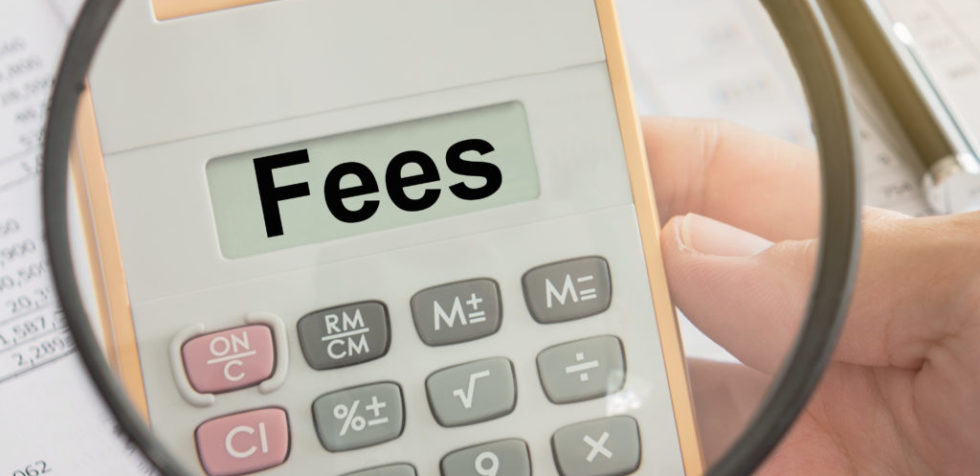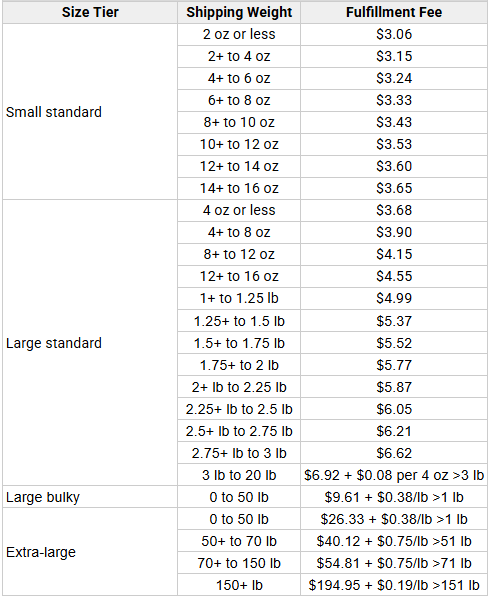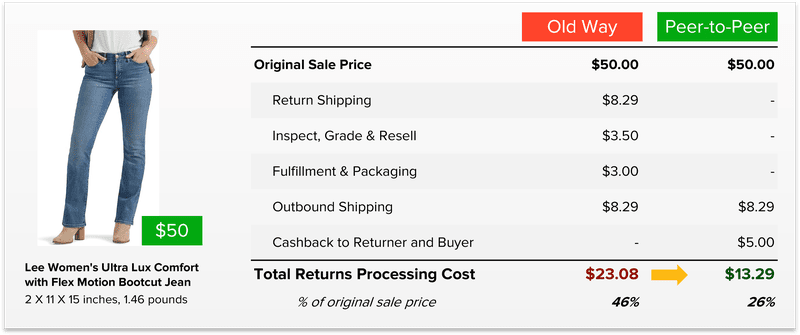Amazon FBA Fees Explained: A Seller’s Breakdown

Last updated on March 14, 2025

In this article
 10 minute
10 minute
- What Is Amazon FBA?
- Benefits of Using Amazon FBA
- Comprehensive Breakdown of FBA Fees
- Amazon SIPP Program: What It Is & How It Saves You Money
- Calculating Amazon FBA Seller Fees
- FBA vs FBM vs SFP: Which Fulfillment Model Is Best?
- FBA vs 3PL: Which Is More Cost-Effective?
- Is Amazon FBA Right for You?
- Frequently Asked Questions
Have you ever wondered how Amazon merchants selling $2 items can possibly make a profit? The truth is that they are not.
In fact, most Sellers fail to calculate all of the fees associated with selling on Amazon and end up losing money as a result. To make matters worse, Amazon doesn’t exactly make it easy for merchants to tabulate all of the costs associated with selling on its marketplace and there are many hidden costs that Amazon doesn’t tell you about.
This guide will walk you through everything you need to know about FBA, including how it works, the full breakdown of Amazon fees, hidden costs that Sellers often overlook, and comparisons with alternative fulfillment options like FBM (Fulfilled by Merchant), SFP (Seller Fulfilled Prime), and third-party logistics (3PL) providers.
What Is Amazon FBA?
FBA is a fulfillment service where Amazon stores, picks, packs, and ships products on behalf of its third-party (3P) Sellers. Additionally, it manages customer service and returns, making it an attractive option for businesses that want to scale without handling logistics themselves.
For Sellers looking to maximize their business potential, Amazon offers a professional selling plan that includes additional tools, services, and reporting features.
How FBA Works: Step-by-Step
- Send Inventory to Amazon – Sellers ship products to Amazon’s fulfillment centers. They can choose to split inbound inventory and ship to the addresses Amazon provides, or Amazon will charge an inbound placement fee for distributing inventory on their behalf. This fee varies based on the product’s size and shipping weight.
- Storage – Amazon stores the inventory until an order is placed.
- Order Processing & Shipping – Once a customer makes a purchase, Amazon picks, packs, and ships the order.
- Customer Service & Returns – Amazon manages inquiries, returns, and refunds for FBA orders.
Benefits of Using Amazon FBA
- Prime Eligibility – Products are automatically eligible for Amazon Prime’s fast, free shipping, making them more attractive to buyers.
- Hands-Free Logistics – Amazon handles storage, shipping, customer service, and returns.
- Scalability – Sellers can scale their business without worrying about fulfillment logistics or hiring staff.
- Better Buy Box Placement – FBA products often have an edge in winning the Buy Box, increasing sales potential.
- Revenue Calculator – A tool that helps Sellers estimate referral fees and potential profits, assisting in making informed decisions about their fulfillment methods.
However, these benefits come with a cost. Let’s break down the fees involved.
Comprehensive Breakdown of FBA Fees
Amazon FBA fees vary based on product size, weight, and storage duration. Understanding the various selling fees is crucial for accurately calculating total selling costs and maintaining profitability. Below is a detailed breakdown.
1. Fulfillment Fees (Per Unit)
FBA fulfillment fees cover picking, packing, and shipping and are determined by the size and weight of the item, and it’s important to understand these fees for effective pricing strategies.

2. Monthly Storage Fees
Amazon charges Sellers a monthly fee for storing inventory in its fulfillment centers. The following are the 2025 base monthly rates and they increase as Storage Utilization Surcharges are applied after 22 weeks in storage. For standard-size products in non-peak season, these surcharges increase the total storage cost by more than 56% after week 22, and nearly double after 28 weeks in storage, etc. This assumes products are not classified as ‘dangerous’:
Period |
Standard Size (per cubic foot) |
Oversized (per cubic foot) |
|---|---|---|
January – September |
$0.78 |
$0.56 |
October – December (Peak) |
$2.40 |
$1.40 |
3. Long-Term Storage Fees
If inventory is stored for over 365 days, Amazon applies long-term storage fees (called the Aged Inventory Surcharge):
- $6.90 per cubic foot OR
- $0.15 per unit (whichever is greater)
Sellers need to closely monitor inventory levels to avoid these charges.
4. Referral Fees
Referral fees are percentage-based fees on each sale, varying by category. It’s the base fee that’s paid by all Amazon Sellers for the privilege of selling on the Amazon marketplace, whether orders are Seller-fulfilled (a.k.a. FBM) or fulfilled by Amazon (FBA). Most categories are charged between 8-15%.
Product Category |
Referral Fee |
|---|---|
Electronics |
8% |
Beauty & Health |
15% |
Books |
15% |
Apparel |
17% |
5. Removal & Disposal Fees
If a Seller wants to remove inventory from Amazon warehouses, they pay:
- Standard-size items: $0.52 – $1.51 per unit
- Oversized items: $1.51 – $4.10 per unit
Disposal fees are slightly lower but still add up over time.
6. Returns Processing Fees
For certain categories like apparel, shoes, and jewelry, Amazon charges the Seller for returns, equivalent to the fulfillment fee for that product.
7. Refund Administration Fees
Refund administration fees are an essential aspect of Amazon FBA fees that Sellers need to be aware of. When a customer requests a refund, Amazon charges a refund administration fee to process it. This fee is either $5.00 or 20% of the refunded charge, whichever is less.
These fees are deducted from the Seller’s Amazon account balance. If the account balance is insufficient, the refund administration fees are charged to the Seller’s credit card. It’s crucial for Sellers to monitor these fees closely, as they can add up quickly, especially in categories with high return rates. Keeping an eye on refund administration fees and understanding their impact on your overall profitability is vital for effective financial management.
8. Low-Inventory-Level Fee and Aged Inventory Surcharge
Amazon imposes a Low-Inventory-Level Fee (in addition to other storage fee types) to encourage Sellers to manage their inventory efficiently and maintain sufficient inventory to fulfill new orders. This fee applies to standard-size products with consistently low inventory relative to customer demand. It starts at $0.32 per cubic foot and reaches $1.11 per cubic foot, based on a “historical days of supply” metric.
In addition to the Low-Inventory-Level Fee, Amazon also charges an Aged Inventory Surcharge for items stored for more than 365 days. This surcharge is $6.90 per cubic foot per month. To avoid these fees, Sellers should regularly review their inventory levels and remove slow-moving or obsolete items. Effective inventory management can help minimize these additional costs and improve overall profitability.
Hidden or Lesser-Known Amazon FBA Seller Fees
Sellers often overlook these extra costs:
- Unplanned Services Fees – Charged when inventory arrives without proper labeling or packaging.
- Inbound Shipping Costs – Amazon doesn’t cover shipping to their warehouses, Sellers must pay for it.
- Selling Plan Fees – Costs associated with the Individual or Professional selling plans, providing access to various tools and services.
Amazon SIPP Program: What It Is & How It Saves You Money
The Ships in Product Packaging (SIPP) program lets Sellers send products in their own packaging (or native retail packaging), eliminating Amazon’s additional packing materials.
SIPP Fee Discounts
By participating in SIPP, Sellers receive discounts on fulfillment fees ranging from $0.04 to $1.32 per unit, depending on size and weight. Compared to standard FBA fees, SIPP reduces costs while supporting sustainability.
Program |
Fee Reduction |
|---|---|
SIPP (Standard-Size) |
$0.04 – $0.23 per unit |
SIPP (Large Bulky, <50 lb) |
$0.58 – $1.32 per unit |
Calculating Amazon FBA Seller Fees
Calculating Amazon FBA Seller fees can be complex, but understanding the various fees involved is crucial for maintaining profitability. Here’s a step-by-step guide to help you navigate the process:
- Determine Your Selling Plan Fee: Choose between the Individual plan, which costs $0.99 per item sold, or the Professional plan, which has a monthly subscription fee of $39.99.
- Calculate Your Referral Fee: This fee is a percentage of the total sales price and varies by product category, typically ranging from 5% to 15%.
- Calculate Your Fulfillment Fee: This is a flat fee per unit, determined by the product’s size and weight, ranging from $3.06 to $6.62 for standard-size items under 3 pounds (excluding apparel which commands slightly higher fees).
- Calculate Your Shipping Cost: This is the cost of shipping the item to the customer, which can vary depending on the shipping carrier and method.
- Add Any Additional Fees: These may include high-volume listing fees, rental book service fees, or refund administration fees.
By following these steps, you can get a clear picture of your Amazon FBA Seller fees and ensure that your pricing strategy covers all costs, helping you maintain profitability.
FBA vs FBM vs SFP: Which Fulfillment Model Is Best?
Fulfillment Model |
Best For |
Prime Eligibility |
Control Over Shipping |
Storage & Shipping Costs |
|---|---|---|---|---|
FBA |
High-volume Sellers |
✅ Yes |
❌ No |
Moderate to High FBA fulfillment costs |
FBM (Fulfilled by Merchant) |
Low-margin or niche Sellers |
❌ No |
✅ Yes |
Can be lower depending on product size and weight |
SFP (Seller Fulfilled Prime) |
Established Sellers with robust logistics |
✅ Yes |
✅ Yes |
Varies depending on ship distance and speed requirements |
Which One Should You Choose?
- FBA: Best for Sellers who prioritize Prime eligibility and hands-off logistics.
- FBM: Ideal for low-margin products or Sellers that either have their own fulfillment infrastructure or partner with a modern and high-quality 3PL.
- SFP: Works well for brands who want Prime benefits and either have established fulfillment capabilities or outsource fulfillment to a 3PL that supports SFP.
FBA vs 3PL: Which Is More Cost-Effective?
A third-party logistics provider (3PL) can be an alternative to FBA. Here’s how they compare:
Factor |
Amazon FBA |
3PL Provider |
|---|---|---|
Fulfillment Cost |
High unless products are small and light |
Lower for higher order volumes |
Brand Control |
Limited |
Full control |
Customer Service |
Amazon handles |
Seller handles |
Storage Fees |
Monthly charges, punitive long-term fees |
Monthly charges, long-term fees vary but are lower |
3PLs are best for Sellers who need lower storage fees, more branding control, and multi-channel fulfillment. FBA is best for Sellers looking for speed, Prime access, and hands-free logistics.
Is Amazon FBA Right for You?
Amazon FBA is a powerful fulfillment option, but understanding the full cost structure is key to maintaining profitability. While FBA provides logistical ease, Prime access, and customer service, it also comes with various fees that can quickly destroy margins, making a business unprofitable if they’re unable to actively manage the program.
To maximize profits:
- Track your FBA fees regularly using the reports available in the Professional Selling plan and optimize inventory to avoid long-term storage charges.
- Consider SIPP if your products qualify for reduced fulfillment fees.
- Compare FBA with FBM, SFP, and 3PLs to find the best fulfillment model for your business.
With the right strategy, Amazon FBA can be a game-changer for your ecommerce success! It just takes work and reliable monitoring to make adjustments before fees get out of control.
Frequently Asked Questions
What is Amazon FBA?
Amazon FBA is a fulfillment service offered by Amazon that allows Sellers to store their products in Amazon’s fulfillment centers. Amazon handles the packaging, shipping, and customer service for these products.
How much does Amazon FBA cost?
Amazon FBA costs vary depending on the product size, weight, and shipping method. Sellers can expect to pay a flat fulfillment fee per unit, ranging from $3.06 to $6.62 for standard-size items under 3 pounds. Larger and heavier items can expect to pay between $9.61 and $194.95, or more if a product is more than 150 pounds.
What is the difference between Amazon FBA and FBM?
Amazon FBA is a fulfillment service where Amazon handles the logistics, while FBM (Fulfillment by Merchant) is a fulfillment method where the Seller manages the packaging, shipping, and customer service themselves.
How do I calculate my Amazon FBA Seller fees?
To calculate your Amazon FBA Seller fees, you need to determine your selling plan fee, referral fee, fulfillment fee, shipping cost, and any additional fees. Understanding these components will help you price your products effectively and maintain profitability.

Up to 64% Lower Returns Processing Cost


